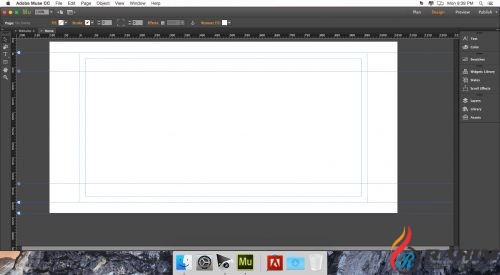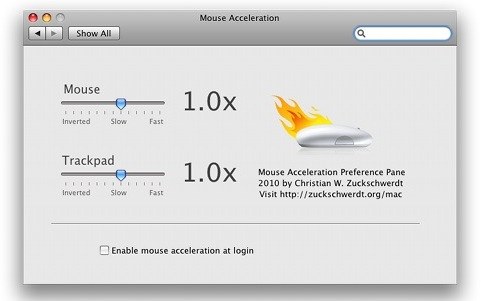Code Muse Mac OS
Code Muse Mac OS
Update your software and check your version of macOS
First, use Software Update to check for any new software your computer may need. After those updates are complete, check which version of macOS your computer has by choosing About This Mac from the Apple () menu.
Adobe Muse 3.2: Create stylish, professional websites without writing code. Professional websites without writing code. Rating: Operating Systems: Mac OS X, Windows 7 (32 bit), Windows 7 (64 bit), Windows 8, Windows Vista, Windows XP. License: Trial Software. Note: The headings on this list indicate the Macintosh System bundle names; the bullet points indicate the version of the System File included in that bundle. This is to make it clearer for people searching for specific bundle versions as opposed to System File versions. Finder File versions are not indicated. 1 Classic Mac OS 1.1 Macintosh System Software (0 - 0.3) 1.1.1 System File 1 1.1.2. To log into your Mac on another Mac, execute the command: ssh -l username remote-address. Replace username with the username you'd use to log into OS X and remote-address with the IP address given to you in the Sharing pane. You can now control your Mac and execute Terminal commands remotely, a real plus.
Identify your device and its requirements
Learn about device names, descriptions, and minimum software requirements.
Apple wireless mice
Magic Mouse 2
- Lightning connector, built-in battery
- Requires OS X 10.11 or later
Apple Magic Mouse
- Removable battery door, uses two AA batteries
- Requires OS X 10.5.6 plus Wireless Mouse Software Update 1.0, or Mac OS X 10.6.2 or later
Apple Wireless Mighty Mouse
- Multiple buttons, scroll ball
- Requires OS X 10.4.8 or later
Apple Wireless Mouse
- Single button
- Requires OS X 10.2.6 or later
Apple wireless keyboards
Magic Keyboard with Numeric Keypad
- Numeric keypad
- Lightning connector, built-in battery
- Requires macOS 10.12.4 or later
Magic Keyboard
- Lightning connector, built-in battery
- Requires OS X 10.11 or later
Apple Wireless Keyboard 2011
- Uses two AA batteries
- Exposé and Launchpad function keys:
- Requires OS X 10.5.8 plus Aluminum Keyboard Update 2.0, or OS X 10.6.2 or later
Apple Wireless Keyboard 2009
- Uses two AA batteries
- Exposé and Dashboard function keys:
- Requires OS X 10.5.8 plus Aluminum Keyboard Update 2.0, or OS X 10.6.2 or later
Apple Wireless Keyboard 2007
- No number pad, uses three AA batteries
- Requires OS X 10.4.8 or later
Apple Wireless Keyboard 2003
- White case, number pad, uses four AA batteries
- Requires OS X 10.2.6 or later

Apple wireless trackpads
Magic Trackpad 2
- Lightning connector, built-in battery
- Requires OS X 10.11 or later
Magic Trackpad
- Aluminum case, uses two AA batteries
- Requires OS X 10.6.5 or later
Find your device's serial number
Learn how find the serial number of your wireless device.
Apple wireless mice
Magic Mouse 2
The serial number of your Magic Mouse 2 is on the bottom surface of the device, along with other markings. It's a string of 17 letters and numbers.
Earlier wireless mice

You can find the serial number of earlier Apple wireless mouse models inside the device's battery bay:
Code Muse Mac Os 11
Apple wireless keyboards
Magic Keyboard and Magic Keyboard with Numeric Keypad
The serial number of your Magic Keyboard is on the bottom surface of the device, along with other markings. It's a string of 17 letters and numbers.
Earlier wireless keyboards
You can find the serial number of earlier Apple wireless keyboard models on the underside of the device, near the power button:
Apple wireless trackpads
Code Muse Mac Os Catalina
Magic Trackpad 2
The serial number of your Magic Trackpad 2 is on the bottom surface of the device, along with other markings. It's a string of 17 letters and numbers.
Earlier wireless trackpads
Code Muse Mac Os Download
You can find the serial number of earlier Apple wireless trackpad models on the underside of the device:
Learn more
Next, type the following command at the Terminal prompt to begin communicating with MUSE.
muse-io --no-dsp --preset AD --osc osc.udp://localhost:5555 --device Muse-XXXX
This commands tells muse-io to pair with the MUSE with the name Muse-XXXX (--device Muse-XXXX). Replace XXXX with the ID number of your MUSE which can be found on your Bluetooth connections page.
The command also specifies --no-dsp.This command disables the onboard signal processing. We recommend this because we want to run the MUSE at 500Hz and the algorithms on the MUSE cannot process at 500Hz.
The next part of the command, --preset AD, specifies the settings for MUSE that we recommend. You can see a full set of the preset options here (dev.choosemuse.com/hardware-firmware/headband-configuration-presets). Note, our code is currently designed to work with a 2014 MUSE hence the AD preset. We use this preset to get the higher sampling rate and to turn off any onboard signal processing.
The other part of the command, --osc osc.udp://localhost:5555 opens up a port on the local machine (port 5555). muse-io will send the incoming data from the MUSE to port 5555 where listening programs can access the data.
Once you enter the above command, you should see a message saying the connection with MUSE is open and you should see a screen that looks like this:
Code Muse Mac OS
